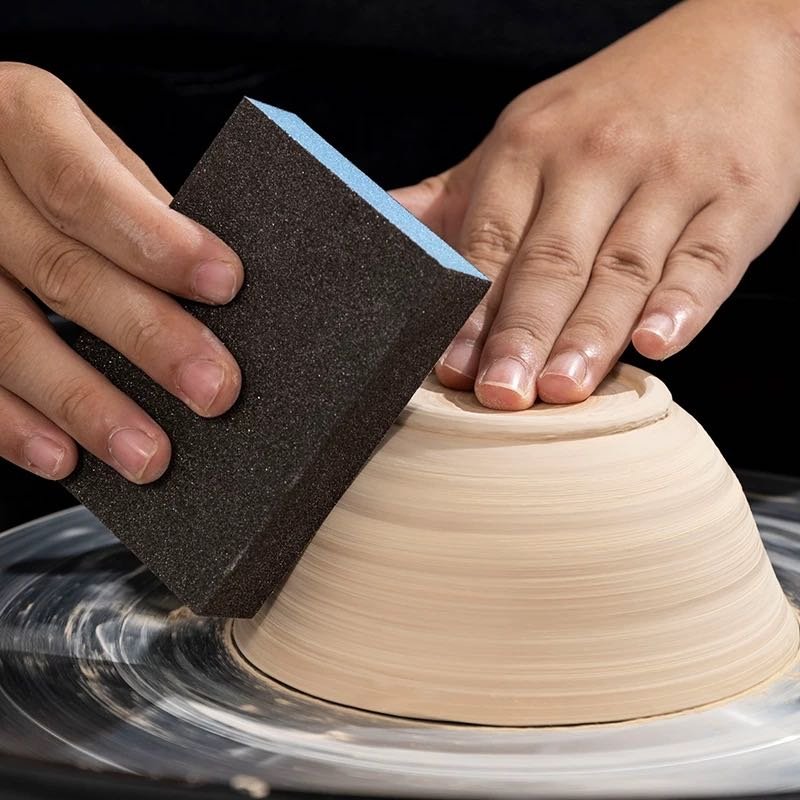 Image 1 of 4
Image 1 of 4

 Image 2 of 4
Image 2 of 4

 Image 3 of 4
Image 3 of 4

 Image 4 of 4
Image 4 of 4





Sanding Block (100 Mesh)
How to Use the Sanding Block:
For Wet Sanding:
Dampen the surface of the ceramic with a small amount of water.
Lightly rub the sanding block across the surface in small, circular motions.
Rinse the block and the piece periodically to keep the sanding process clean.
For Dry Sanding:
Simply use the sanding block on the dry surface of the ceramic piece, gently rubbing it in the direction you wish to smooth.
Be careful not to apply too much pressure, as it could create deep scratches or damage the surface.
Benefits:
Smoothing Surfaces: It helps smooth out rough patches, refine the texture, and create a clean, polished surface.
Versatile: Works on both bone-dry clay and bisque-fired ceramics.
Control: The 100-grit block provides a good balance between abrasive power and finish quality, making it ideal for general smoothing without over-sanding.
Important Tips:
Avoid Over-Sanding: Be cautious when using any sanding tool, especially on bone-dry clay, as excessive sanding can weaken the piece or cause it to crack.
Use Water for Wet Sanding: Wet sanding can keep the process dust-free, but you need to keep the ceramic piece moist to avoid the block from clogging or the surface from getting too dry and causing scratches.
Clean the Block Regularly: Whether wet or dry, make sure to clean the block periodically to maintain its efficiency.
How to Use the Sanding Block:
For Wet Sanding:
Dampen the surface of the ceramic with a small amount of water.
Lightly rub the sanding block across the surface in small, circular motions.
Rinse the block and the piece periodically to keep the sanding process clean.
For Dry Sanding:
Simply use the sanding block on the dry surface of the ceramic piece, gently rubbing it in the direction you wish to smooth.
Be careful not to apply too much pressure, as it could create deep scratches or damage the surface.
Benefits:
Smoothing Surfaces: It helps smooth out rough patches, refine the texture, and create a clean, polished surface.
Versatile: Works on both bone-dry clay and bisque-fired ceramics.
Control: The 100-grit block provides a good balance between abrasive power and finish quality, making it ideal for general smoothing without over-sanding.
Important Tips:
Avoid Over-Sanding: Be cautious when using any sanding tool, especially on bone-dry clay, as excessive sanding can weaken the piece or cause it to crack.
Use Water for Wet Sanding: Wet sanding can keep the process dust-free, but you need to keep the ceramic piece moist to avoid the block from clogging or the surface from getting too dry and causing scratches.
Clean the Block Regularly: Whether wet or dry, make sure to clean the block periodically to maintain its efficiency.


